Plants to Attract Wildlife: Creating a Haven for Nature
- August 16, 2024
- 0 comment
Create a thriving habitat by choosing native plants that attract pollinators, birds, and beneficial wildlife year-round. Incorporating wildlife-friendly plants into your garden or landscape design enhances its beauty and provides essential resources for various animal species. You can create a vibrant ecosystem that supports pollinators, birds, and other wildlife by choosing the right plants. This will guide you through the best plants to attract wildlife, focusing on their benefits and how to select and care for them effectively.
Understanding the Benefits of Wildlife-Friendly Plants
Enhancing Biodiversity
Wildlife-friendly plants play a crucial role in fostering biodiversity, which refers to the variety of life forms in a given ecosystem. Integrating these plants into your garden or landscape contributes to a more balanced and resilient ecosystem. Here’s how they enhance biodiversity:
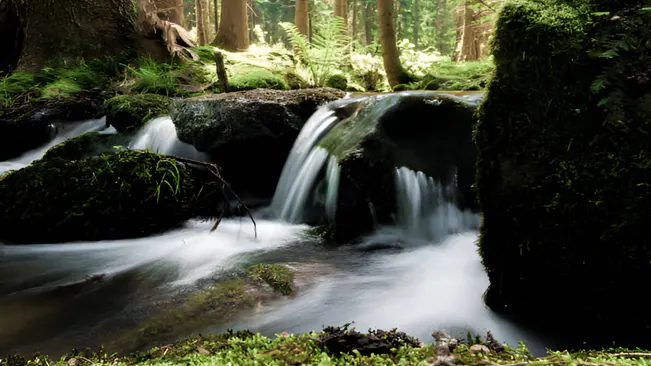
- Food Sources: Different plants provide various types of food—nectar, pollen, seeds, fruits, and berries that support a wide range of wildlife. For example, coneflowers offer nectar for butterflies, while oak trees provide acorns for squirrels and birds.
- Habitat Creation: Plants serve as habitat for numerous species. Tall grasses and dense shrubs can offer cover for small mammals and nesting sites for birds. Trees can host nests for birds and provide shelter for insects and other creatures.
- Ecosystem Stability: A diverse array of plants supports a greater number of species and helps to maintain ecological balance. This diversity can lead to a more resilient ecosystem that can better withstand environmental changes and stresses.
Supporting Pollinators
Pollinators, such as bees, butterflies, and hummingbirds, are essential for the reproduction of many plants. Wildlife-friendly plants that provide nectar and pollen are vital for these creatures. Here’s why supporting pollinators is important:
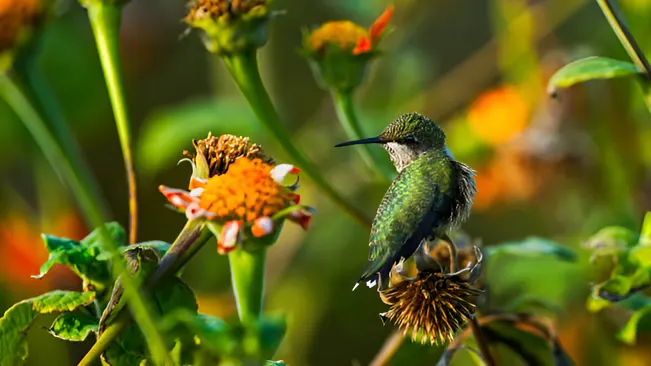
- Plant Reproduction: Pollinators facilitate the reproduction of flowering plants by transferring pollen from one flower to another. This process enables plants to produce fruits and seeds, which are crucial for their survival and the survival of other species that depend on them.
- Biodiversity: Pollinators help maintain plant diversity by supporting the growth of a variety of plant species. This, in turn, supports a range of other wildlife that depends on diverse plant life for food and habitat.
- Ecosystem Services: Healthy pollinator populations contribute to the production of fruits, vegetables, and nuts. By attracting and supporting pollinators, you are also supporting agricultural systems and contributing to food security.
Providing Food and Shelter
Many wildlife-friendly plants offer both food and shelter, which are essential for wildlife survival. Here’s a closer look at these benefits:
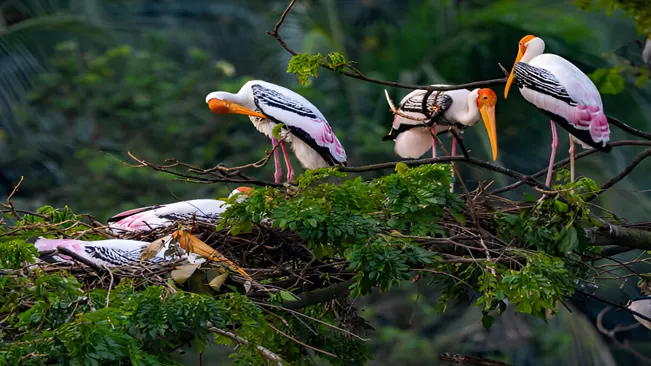
- Food Resources: Plants that produce seeds, fruits, or berries provide critical food sources for various wildlife species. For instance, sunflowers produce seeds that attract birds, while berry-producing shrubs like holly provide food for birds and mammals.
- Shelter and Nesting Sites: Plants also offer shelter and nesting sites. Dense shrubs and trees provide cover from predators and harsh weather conditions. Plants like vines and climbing plants can offer nesting sites for birds and insects.
- Urban Benefits: In urban areas where natural habitats are limited, wildlife-friendly plants become even more important. They create microhabitats that can support local wildlife and contribute to urban greening efforts. Urban gardens with these plants can provide essential resources for wildlife that may otherwise struggle to find suitable habitats.
Selecting Plants for Different Types of Wildlife
Pollinators
Pollinators, such as bees, butterflies, and hummingbirds, play a crucial role in plant reproduction by transferring pollen between flowers. To attract these beneficial insects and birds, choose plants that offer ample nectar and pollen.
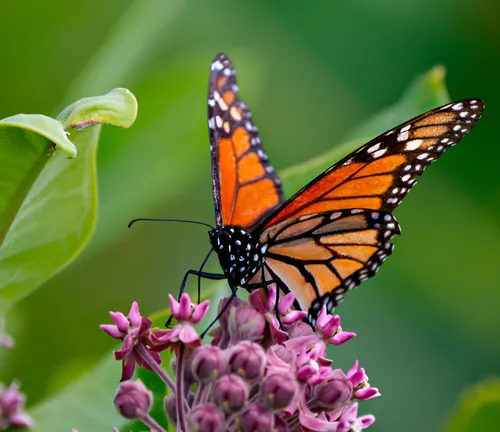
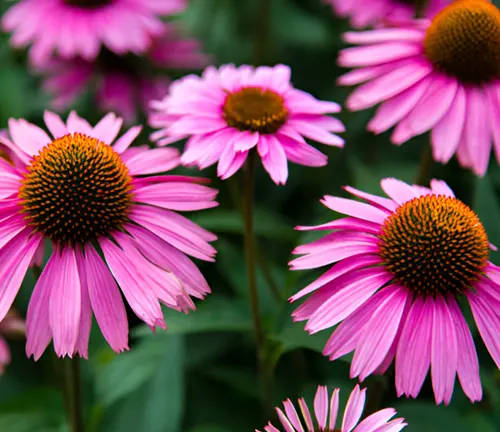
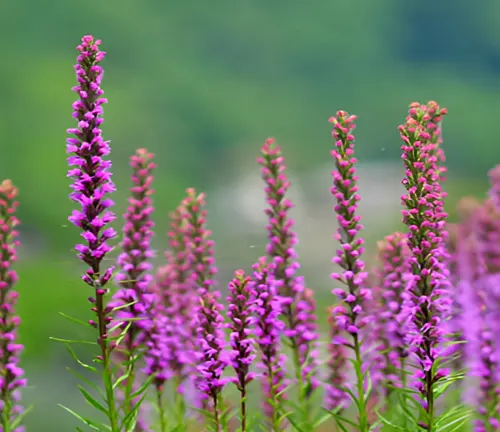
- Milkweed (Asclepias spp.)
- Milkweed is a key plant for Monarch butterflies, as it serves as both a nectar source and the sole host plant for their larvae. The plant features clusters of small, fragrant flowers that attract a variety of pollinators. Provides nectar for adult butterflies and breeding sites for Monarch caterpillars. It’s also a larval food source for several other butterfly species.
- Echinacea (Echinacea purpurea)
- Commonly known as coneflower, Echinacea has large, daisy-like blooms with prominent cone-shaped centers. It comes in various colors, including purple, pink, and white. Attracts bees and butterflies with its nectar-rich flowers. The seeds are also a food source for birds.
- Liatris (Liatris spp.)
- Known as blazing star or gayfeather, Liatris produces tall spikes of purple, pink, or white flowers that open from the top down. Its dense flower spikes are particularly appealing to butterflies and bees. The plant also provides visual interest in the garden with its unique flower structure.
Birds
Birds benefit from plants that provide food, shelter, and nesting sites. Trees and shrubs with seeds, fruits, or berries are particularly attractive to a variety of bird species.
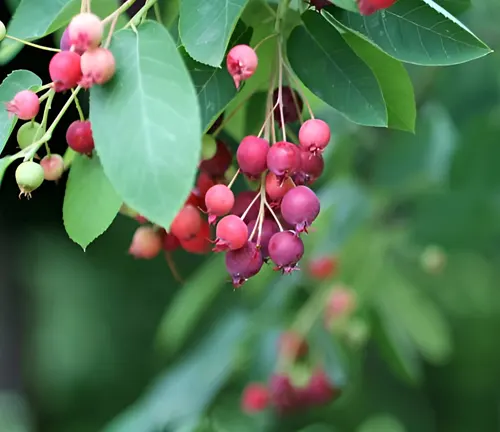
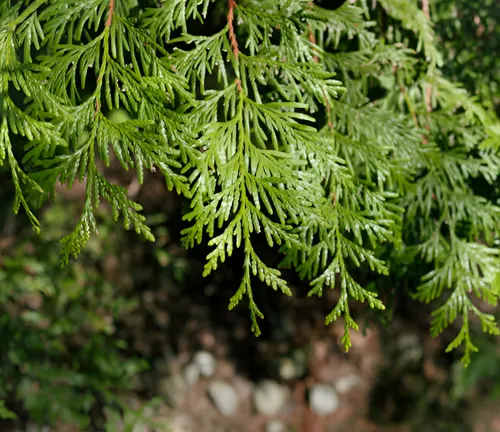
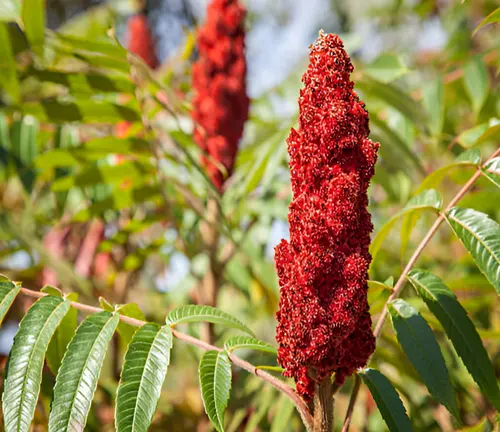
- Serviceberry (Amelanchier spp.)
- Serviceberry is a small tree or large shrub that produces white flowers in spring followed by edible berries in summer. The berries turn red or purple when ripe. The berries are a valuable food source for many bird species, including robins, bluebirds, and cedar waxwings. The plant also provides excellent cover and nesting sites.
- Red Cedar (Juniperus virginiana)
- Red Cedar is an evergreen tree with dense foliage and blue-green, berry-like cones. It’s not a true cedar but a type of juniper. Provides shelter and nesting sites for birds like cedar waxwings, northern mockingbirds, and other songbirds. The berries are eaten by many bird species.
- Sumac (Rhus spp.)
- Sumac is a group of shrubs and small trees that produce bright red, fuzzy fruit clusters. The leaves turn vibrant red in the fall. The fruit is high in vitamin C and attracts a wide range of bird species, including finches and grouse. Sumac also offers excellent cover and habitat.
Small Mammals and Insects
Plants that provide cover, food, and nesting sites can support small mammals and insects. These plants create a habitat that supports a range of species beyond just pollinators and birds.
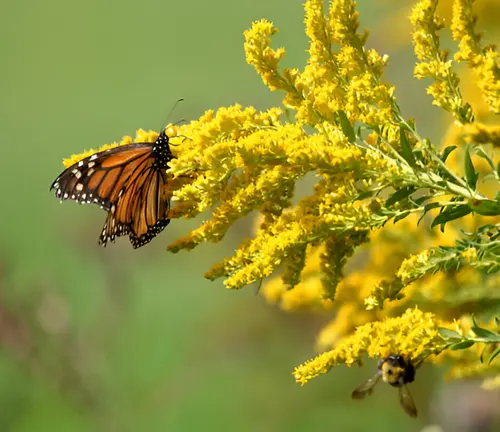
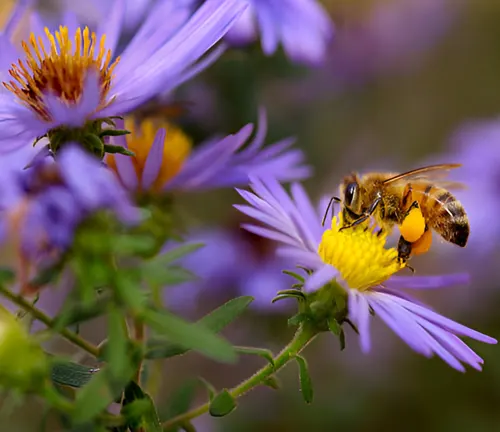
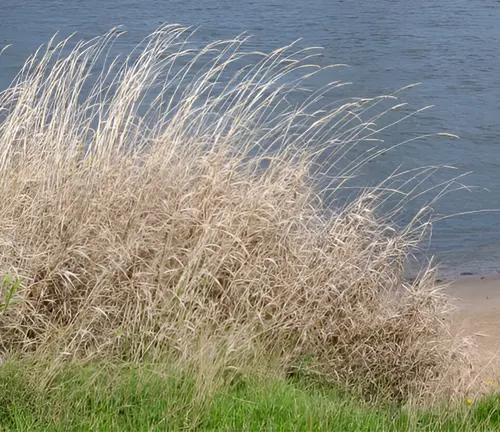
- Goldenrod (Solidago spp.)
Goldenrod is a perennial with tall, dense clusters of small yellow flowers that bloom in late summer and fall. Attracts a variety of insects, including bees, butterflies, and beneficial insects like ladybugs. It also provides late-season nectar when other flowers are scarce. - Aster (Aster spp.)
Asters are flowering perennials that produce daisy-like blooms in various colors, including purple, pink, and blue. They bloom in late summer to fall. Offers late-season nectar for bees and butterflies, helping them prepare for winter. The seeds are also eaten by birds. - Native Grasses (e.g., Switchgrass, Panicum virgatum)
Switchgrass is a tall, warm-season grass that forms dense clumps and produces fluffy seed heads. Provides cover and habitat for small mammals and insects. The seeds are a food source for birds, and the dense foliage offers shelter and nesting sites for various wildlife.
Choosing and Planting Wildlife-Friendly Plants
- Assessing Your Site Consider factors such as soil type, light conditions, and moisture levels when selecting plants. Choose species that are well-suited to your local climate and soil conditions.
- Choosing Native Plants are adapted to the local environment and provide the most benefit to local wildlife. They require less maintenance and are more resilient to pests and diseases.
- Avoiding Invasive Species Be cautious about planting species that are invasive in your area, as they can outcompete native plants and disrupt local ecosystems.
- Planting for Seasonal Interest Incorporate a variety of plants that provide food and habitat throughout the year. This ensures that wildlife has resources available in different seasons.
Caring for Wildlife-Friendly Plants
- Providing Adequate Water Ensure that your plants receive enough water, especially during dry periods. Consider installing a rain garden or birdbath to provide additional water sources for wildlife.
- Using Organic Practices Avoid using chemical pesticides and fertilizers, which can harm wildlife. Opt for organic or natural alternatives to manage pests and enrich the soil.
- Creating a Habitat In addition to planting, consider adding features like birdhouses, bat boxes, and brush piles to further support wildlife.
Success Stories and Examples
- The Pollinator Garden Movement Many communities and organizations have embraced pollinator gardens to support declining bee and butterfly populations. These gardens often feature native flowering plants and serve as educational tools for the public.
- Urban Wildlife Corridors Cities are increasingly integrating green spaces and wildlife corridors into urban planning. These areas often include native plants that create habitats for various species and improve urban biodiversity.
Conclusion
By selecting and caring for wildlife-friendly plants, you can make a significant impact on local ecosystems and support a diverse range of species. Whether you have a small garden or a large landscape, incorporating these plants will help create a thriving haven for wildlife. Embrace the beauty and benefits of these plants, and enjoy the vibrant and dynamic ecosystem they help foster.
FAQs
1. What types of plants are best for attracting pollinators?
Plants with bright, tubular flowers or open blossoms are ideal for attracting pollinators. Examples include milkweed, echinacea, and lantana. These plants provide nectar and pollen for bees, butterflies, and hummingbirds.
2. How can I attract birds to my garden?
To attract birds, and plant species that produce seeds, fruits, or berries. Additionally, include trees and shrubs that offer shelter and nesting sites. Good choices are serviceberry, red cedar, and sumac.
3. Are native plants important for wildlife?
Yes, native plants are crucial because they are adapted to the local environment and provide the best resources for native wildlife. They support local pollinators and wildlife more effectively than non-native species.
4. What should I consider when choosing plants for wildlife?
Consider factors such as soil type, light conditions, moisture levels, and climate. Choose plants that are well-suited to these conditions and avoid invasive species that could harm local ecosystems.
5. How can I create a year-round habitat for wildlife?
Incorporate a variety of plants that offer food and shelter throughout the year. Select plants that provide nectar in the spring and summer, seeds and berries in the fall, and cover or shelter in the winter.
6. What are some examples of plants that attract butterflies?
Plants that attract butterflies include milkweed, lavender, zinnias, and butterfly bush. These plants provide nectar and can serve as larval host plants for butterfly caterpillars.
7. Can I use plants to attract beneficial insects?
Yes, certain plants attract beneficial insects like ladybugs and lacewings. Examples include goldenrod, dill, and fennel. These plants provide food and habitat for these helpful insects.
8. How do I prevent my wildlife-friendly garden from becoming overrun by pests?
Use organic pest management techniques, such as introducing beneficial insects, using neem oil, or employing physical barriers. Avoid chemical pesticides, which can harm both wildlife and beneficial insects.
9. How often should I water plants that attract wildlife?
Watering needs depend on the specific plants and your local climate. Most wildlife-friendly plants benefit from regular watering, especially during dry spells. Be sure to monitor soil moisture and adjust watering as needed.
10. What are some common mistakes to avoid when planting for wildlife?
Common mistakes include choosing non-native or invasive species, neglecting seasonal plant needs, and using chemical pesticides. Focus on native plants, provide year-round resources, and use organic methods to create a healthy wildlife habitat.
Attracting wildlife to your garden or landscape is more than just a way to enjoy the beauty of nature it’s an investment in the health of your local ecosystem. By choosing the right plants and thoughtfully creating habitats, you’re helping to sustain the delicate balance that supports diverse species. Each plant you select plays a vital role in this process, offering food, shelter, and breeding sites for wildlife. As you cultivate this living sanctuary, you’ll not only witness the flourishing of nature around you but also contribute to a more biodiverse and resilient environment. Whether you’re a seasoned gardener or just beginning, every step you take towards planting for wildlife is a step towards a brighter, more vibrant world.

Kristine Moore
Forestry AuthorI'm Kristine Moore, a seasoned garden landscaping professional with over 30 years of experience. My extensive career has been dedicated to transforming outdoor spaces into stunning, sustainable landscapes. With a deep understanding of horticulture, design principles, and environmental stewardship, I have become a respected figure in the field, known for creating harmonious, visually appealing, and eco-friendly gardens. My commitment to excellence and continuous learning in landscaping trends and techniques has solidified my reputation as an expert in garden design and implementation.













Leave your comment